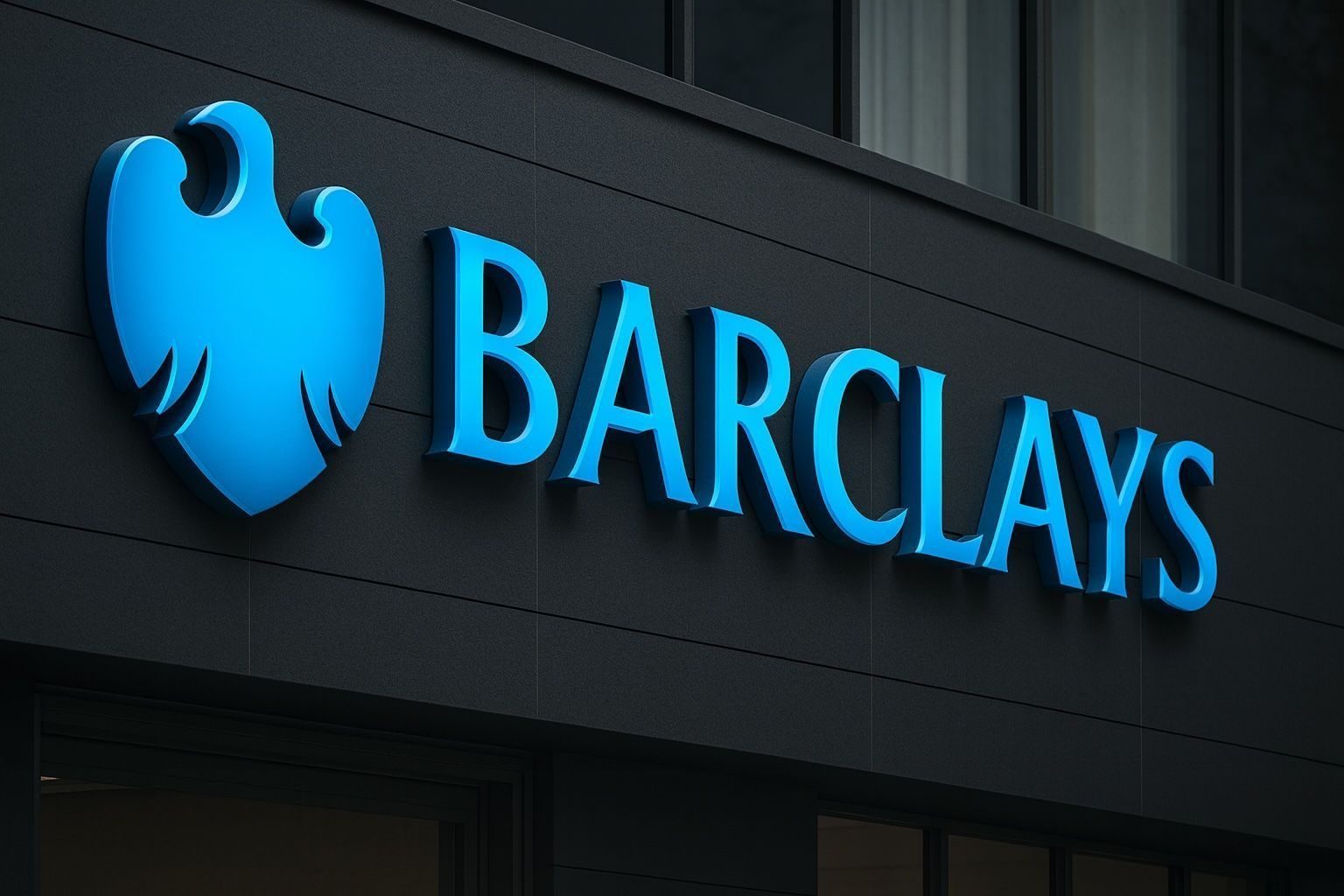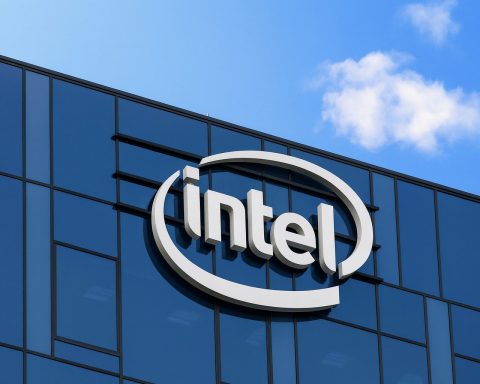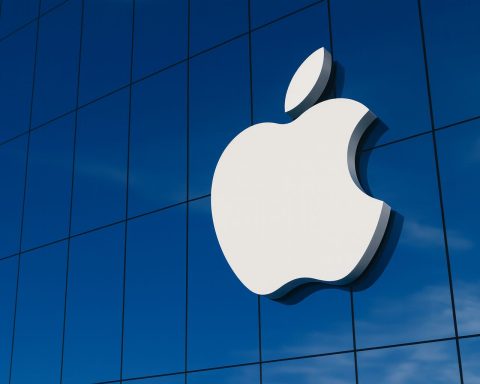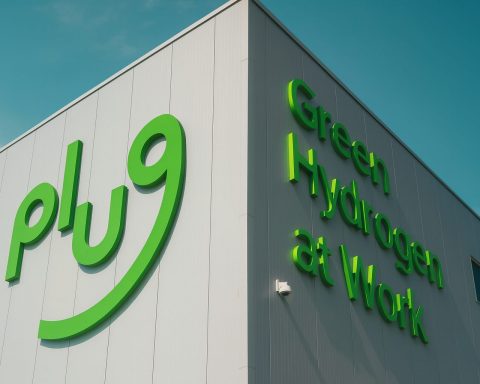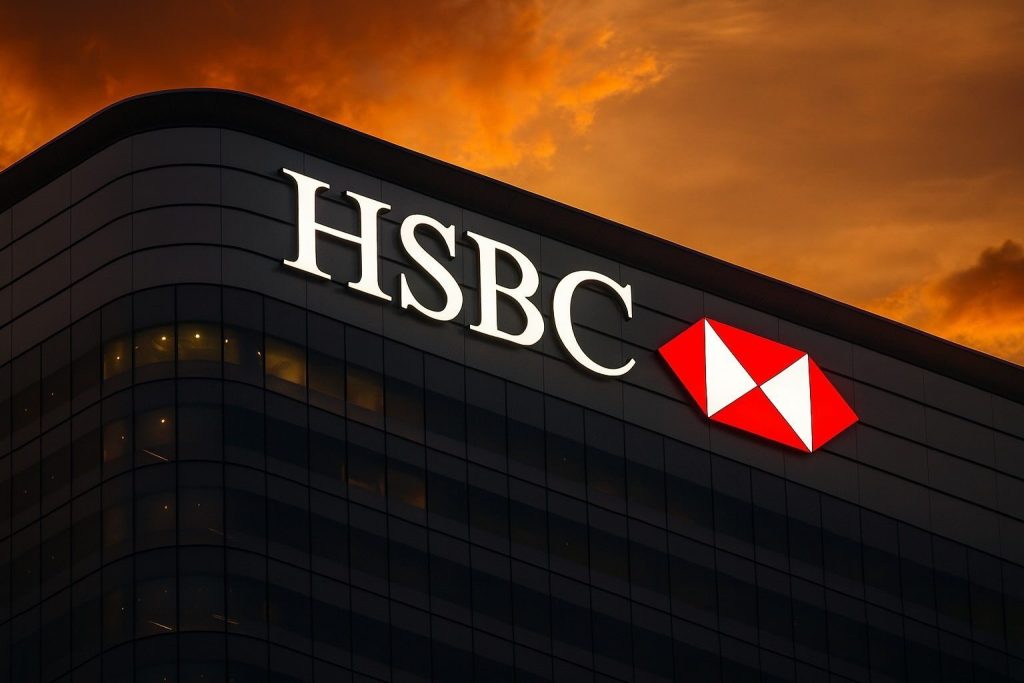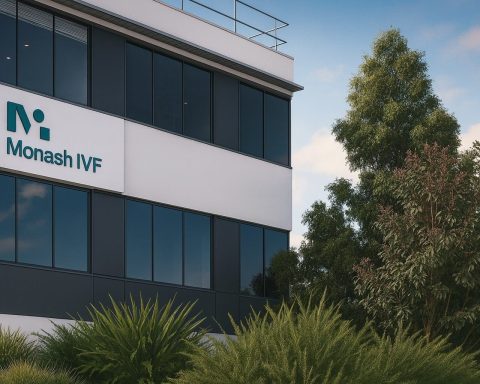Barclays PLC (LSE: BARC, NYSE: BCS) spent Monday trading just below the 400p mark as investors digested a fresh regulatory update on its share buyback, the completion of a £500m subordinated bond redemption, and confirmation that the bank has crossed a 5% stake in French video-game publisher Ubisoft. [1]
At the London close on 24 November 2025, Barclays shares changed hands at about 398–399p, up roughly 1.5% on the day. Over the past 12 months the stock has climbed close to 50%, and on a two‑year view it has surged by around 175%, putting the FTSE 100 lender among the best‑performing large UK banks in 2025. [2]
Barclays share price today (24 November 2025)
According to exchange and data provider figures, Barclays PLC:
- Closed: ~398.5p
- Intraday range: roughly 398p–402p
- Day change: around +1.5% versus Friday’s close near 392p
- Market value: about £55–57 billion
- Trailing P/E: c. 11x
- Dividend yield: a little over 2%. [3]
On fundamentals, the stock is now trading very close to its tangible net asset value (TNAV). Barclays’ third‑quarter results showed TNAV of roughly 392p per share, meaning Monday’s close around 398p values the bank at just over 1.0x book – a big re‑rating from the deep discount it traded on through 2023–24. [4]
In New York, the U.S.‑listed ADR (NYSE: BCS) last closed at about $20.80 on Friday, before U.S. markets reopen after the weekend. [5]
Buyback momentum: another 4.1 million shares cancelled
The most concrete company‑specific news today is another update on Barclays’ ongoing share repurchase programme.
A new “Transaction in Own Shares” regulatory notice confirms that the bank bought 4,080,366 ordinary shares for cancellation on 21 November, at prices between roughly 389.5p and 395.1p, with a volume‑weighted average of about 392.1p. [6]
Key points from the filing:
- The purchases form part of the £1.0bn buyback that began on 30 July 2025, aimed at reducing the company’s share capital.
- Since that programme started, Barclays has now repurchased about 255.4 million shares on the London Stock Exchange at an average price just under 381p per share. [7]
- Following the latest cancellation, the issued share count stands at roughly 13.92 billion ordinary shares, with no treasury shares held. [8]
This £1bn programme is itself part of a larger capital‑return story. In October, alongside its third‑quarter results, Barclays announced plans for an additional £500m buyback to run once the current programme ends, taking total buybacks for the 2024–26 plan to at least £1.5bn on top of ordinary dividends. [9]
For shareholders, the effect is two‑fold:
- Each remaining share represents a larger slice of earnings and book value, supporting earnings per share (EPS) and return on tangible equity (RoTE).
- The steady drumbeat of daily repurchases – consistently disclosed via RNS – provides a built‑in buyer around the high‑300p range, helping to cushion volatility on weaker macro days.
£500m subordinated notes redeemed as capital stack reshaped
Today is also the settlement date for a significant debt move that Barclays flagged earlier this month.
The bank has now fully redeemed its GBP 500 million 3.750% Fixed Rate Resetting Subordinated Callable Notes due 2030. The notes were called on 22 November 2025, but because that date fell on a non‑business day, both principal and final interest are being paid today, 24 November, with the listing on the London Stock Exchange to be cancelled on or shortly after today. [10]
Why this matters:
- The notes sit in subordinated Tier 2 capital, below senior debt but above equity.
- Calling them early simplifies the capital structure and may reduce funding costs if Barclays can refinance at more attractive spreads.
- The bank’s CET1 ratio was a comfortable 14.1% at the end of Q3 2025, or about 13.9% after accounting for the planned £500m buyback, leaving it at the top of its 13–14% target range even after this redemption. [11]
For equity investors, the key takeaway is that Barclays is returning capital to shareholders while still operating with what regulators would consider a strong capital buffer.
Barclays crosses 5% in Ubisoft – trading book or strategic bet?
In continental Europe, one of the most eye‑catching headlines involving Barclays today came from Paris.
A filing with France’s market regulator (AMF), reported by MarketScreener, shows that Barclays has crossed the 5% threshold in Ubisoft Entertainment’s share capital. As of 17 November, the bank indirectly holds 6,760,320 Ubisoft shares, equivalent to about 5.02% of the company’s capital and 4.55% of voting rights. [12]
The disclosure explains that this threshold crossing is the result of both on‑market share purchases and an increase in Ubisoft exposure “through assimilation” – typically a reference to positions held via derivatives, stock lending or similar instruments rather than a straightforward long‑only investment. [13]
For Barclays shareholders, the Ubisoft news is best read as:
- A sign of the bank’s active equities and derivatives franchise in Europe, rather than a pure strategic equity stake in gaming.
- A reminder that large universal banks often show up on shareholder registers because they act as prime brokers, hedging counterparties or intermediaries in larger transactions.
It does, however, highlight the fee‑generating potential of Barclays’ markets and financing businesses – segments that helped push group income up around 9% year‑on‑year in Q3. [14]
Form 8.5 disclosures: Barclays in the middle of M&A action
Separate regulatory filings today show Barclays Capital Securities Ltd – the group’s investment banking arm – acting as an “exempt principal trader” in several ongoing takeover‑code situations.
Fresh Form 8.5 (EPT/Non‑RI) disclosures released on 24 November relate to:
- American Axle & Manufacturing Holdings, Inc., connected to the proposed deal with Dowlais Group PLC. [15]
- AQuA Acquisition Sub LLC, an indirect wholly‑owned subsidiary of Qualcomm Inc., in its offer involving Alphawave IP Group PLC. [16]
These forms, required under the UK Takeover Code, set out Barclays’ long and short positions, derivatives and recent trading in the relevant securities. They do not mean Barclays itself is trying to acquire these companies; instead, the bank is typically:
- Providing liquidity as a market‑maker;
- Hedging exposures linked to client derivatives; or
- Acting as a broker or advisor to one of the parties involved. [17]
While highly technical, these disclosures underscore how deeply embedded Barclays is in global deal‑making, supporting the fee income that helped its Investment Bank division grow income by around 8% in Q3. [18]
Hedge fund filings: one U.S. fund cuts its BCS stake
On the other side of the Atlantic, SEC filings analysed by MarketBeat show Entropy Technologies LP slashing its position in Barclays’ New York‑listed shares (BCS) during the second quarter.
According to the report published today:
- Entropy reduced its stake by about 70.8%, selling roughly 97,500 shares.
- It now holds 40,316 BCS shares, valued at around $749,000 at the time of the filing. [19]
The same article notes that several other U.S. institutions, including AMG National Trust Bank, Fifth Third Bancorp and Prospera Financial Services, made incremental additions to their holdings, while total institutional ownership in Barclays remains modest at just over 3% of outstanding shares. [20]
In context, these moves are small relative to Barclays’ market cap and unlikely to drive the share price on their own. They do, however, show:
- Some repositioning by U.S. investors after this year’s strong rally; and
- Ongoing diversification of the shareholder base beyond UK‑domiciled institutions and retail investors.
How today fits into Barclays’ 2025 story
To understand why the stock is hovering around 400p – a level that would have sounded ambitious 18 months ago – it’s worth revisiting the third‑quarter results that set the tone for this autumn’s rally.
On 22 October 2025, Barclays reported:
- Q3 2025 income: about £7.2bn, up 9% year‑on‑year.
- Profit before tax: roughly £2.1bn, down about 7% versus Q3 2024.
- Attributable profit: around £1.5bn.
- Group RoTE:10.6% for the quarter and 12.3% year‑to‑date.
- Cost–income ratio:59% year‑to‑date, with £500m of annual cost savings achieved one quarter earlier than planned. [21]
The drag on profit came from one‑off charges, including:
- An additional £235m provision for motor‑finance redress, taking the total to £325m. [22]
- A £110m hit linked to the collapse of U.S. firm Tricolor, part of wider concerns over banks’ exposure to private credit markets. [23]
Despite those headwinds, management felt confident enough to:
- Upgrade 2025 RoTE guidance to >11%, and reaffirm a >12% target for 2026.
- Nudge up guidance for 2025 net interest income to more than £12.6bn.
- Recommit to returning at least £10bn of capital over the current multi‑year plan via dividends and buybacks. [24]
That combination of solid underlying profitability, a strong capital position and aggressive capital returns goes a long way to explaining why the share price has almost doubled from late‑2023 levels and is now flirting with book value. [25]
Macro backdrop: UK budget, rates and global equity sentiment
Beyond stock‑specific headlines, Barclays shares remain sensitive to macro and policy news, and there is plenty of that this week.
1. UK Budget risk
Chancellor Rachel Reeves is due to deliver a closely watched budget later this week. Reporting today highlights:
- A likely downgrade in growth and productivity forecasts from the Office for Budget Responsibility (OBR), implying a £20–30bn fiscal shortfall.
- Expectations of further tax rises, potentially skewed towards wealth, property and higher earners, as Reeves tries to balance investment pledges with fiscal discipline after the 2022 mini‑budget crisis.
- A government‑commissioned review calling for a “radical reset” of the UK’s nuclear power strategy, with large‑scale projects like Sizewell C and small modular reactors (SMRs) in focus. TS2 Tech
For banks like Barclays, markets will be watching for any sector‑specific measures (for example, bank levies or changes to the surcharge) as well as the broader impact on gilts, sterling and UK growth expectations.
2. Rates and global risk appetite
On the global side, Barclays’ own strategists recently made headlines by raising their year‑end 2026 target for the S&P 500 to 7,400, implying an 11.4% gain from last Wednesday’s close. The call leans on continued strength in megacap tech and AI‑related earnings, alongside expectations that Fed rate cuts will be supportive for risk assets. [26]
If that constructive view on risk assets proves right, it tends to be good news for universal banks with sizeable investment‑banking and markets divisions – including Barclays.
Closer to home, expectations of Bank of England rate cuts in 2026 are a double‑edged sword: they may pressure net interest margins over time but support valuations for UK equities and credit, helping trading revenues and capital market fees. [27]
What to watch next for Barclays shares
Looking beyond today’s headlines, several catalysts could move the Barclays share price from here:
- Autumn Budget (this week)
- Clarity on any bank‑specific taxes or changes to the wider corporate tax regime.
- Market reaction in gilts and sterling, which influences banks’ funding costs and investor sentiment towards UK assets. TS2 Tech
- December Bank of England meeting
- Whether the Monetary Policy Committee sticks to expectations of an initial rate cut, or pushes back because of sticky inflation, will feed directly into forecasts for 2026 net interest income. [28]
- Further RNS on buybacks and capital instruments
- The pace and pricing of share repurchases will remain a key signal of management’s view on valuation.
- Additional moves to call or refinance subordinated debt could further streamline the capital stack. [29]
- Motor‑finance redress and other regulatory overhangs
- Any update from the FCA on the motor‑finance remediation scheme, or further provisions, would be watched closely after this quarter’s £235m top‑up. [30]
- Execution against medium‑term targets
- Investors will want to see evidence, in 2026 guidance and beyond, that Barclays can sustain a RoTE above 12% while keeping the cost–income ratio around 60% and continuing to return sizeable capital. [31]
Bottom line
For 24 November 2025, the Barclays PLC story is not about a shock profit warning or a dramatic strategic pivot. Instead, it’s about steady capital returns and balance‑sheet housekeeping:
- Another chunk of shares bought back and cancelled;
- A £500m subordinated bond redeemed and delisted;
- A newly disclosed 5%+ stake in Ubisoft, underscoring the breadth of the bank’s markets franchise; and
- Ongoing repositioning among institutional investors, without any sign of a wholesale rush for the exits.
With the stock now trading near book value after a powerful multi‑year rally, the debate for investors is shifting from “is Barclays too cheap?” to “can management keep delivering double‑digit returns and large cash payouts through the cycle?”
As ever, this article is for information only and does not constitute investment advice. Anyone considering buying or selling Barclays shares should carry out their own research and, if necessary, consult a regulated financial adviser.
References
1. www.tradingview.com, 2. uk.finance.yahoo.com, 3. uk.finance.yahoo.com, 4. www.investegate.co.uk, 5. www.macrotrends.net, 6. www.tradingview.com, 7. www.tradingview.com, 8. www.tradingview.com, 9. www.reuters.com, 10. www.marketscreener.com, 11. www.investegate.co.uk, 12. www.marketscreener.com, 13. www.marketscreener.com, 14. www.investegate.co.uk, 15. www.tradingview.com, 16. www.investments.halifax.co.uk, 17. www.tradingview.com, 18. www.investegate.co.uk, 19. www.marketbeat.com, 20. www.marketbeat.com, 21. www.investegate.co.uk, 22. www.reuters.com, 23. www.reuters.com, 24. www.alpha-sense.com, 25. www.digrin.com, 26. www.reuters.com, 27. uk.investing.com, 28. uk.investing.com, 29. www.tradingview.com, 30. www.reuters.com, 31. www.alpha-sense.com
